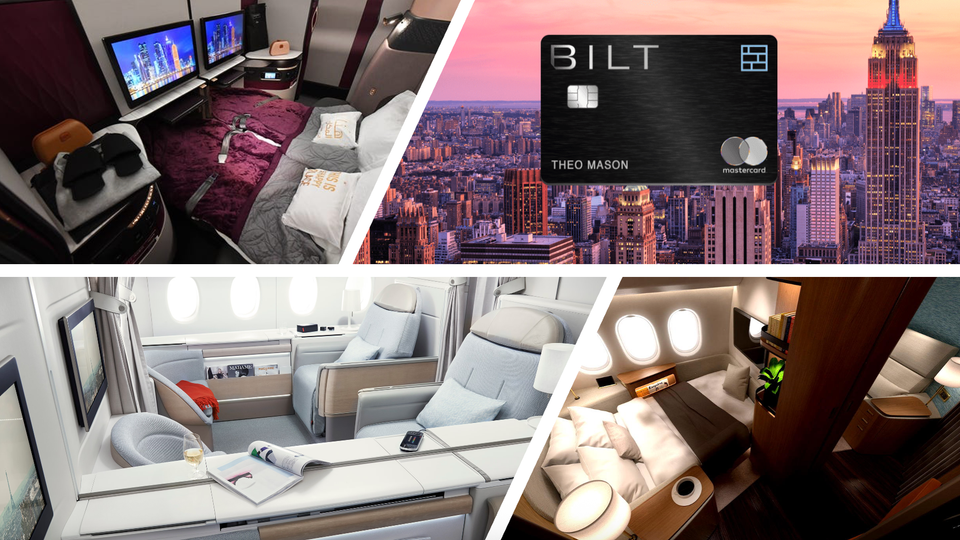Hawaii Isn’t Free: Why Most Award Redemptions to the Islands Are Terrible
Think Hawaii is still a “free trip” with points? Think again. Sky-high redemptions, dynamic pricing, and resort fees are killing value. Most travelers are burning six figures for pennies back. But with the right strategy? You’ll fly lie-flat, stay beachfront, and still come out ahead.


If You Only Had 60 Seconds to Read This Article (Click Here)
Most travelers think Hawai’i is the perfect use of points. It's not. In fact, it’s one of the worst value destinations in award travel. People burn 150,000+ points on roundtrips worth just $500-$700 in cash - and call it a win. That’s not strategy. That’s marketing. Just because a flight is “free” doesn’t mean it’s smart. Value is measured in cost per point, not sticker price.
The culprit? Bad earn habits, worse redemption habits, and a loyalty program ecosystem that punishes beginners. Delta, United, and Hawaiian Airlines are the biggest offenders - offering economy awards for 45k-70k one-way when cash prices are $200-$350. Business class? Easily 150k+ per seat, one-way, and often on narrow-body planes. And don't even get us started on hotel redemptions: people torch 400k Marriott points for a five-night stay worth maybe $2,000 - a redemption rate barely better than cashback.
But smart travelers don’t play the same game. They use Turkish miles to fly United for 7,500 points. They use British Airways Avios for West Coast hops at 13k roundtrip. They book Hyatt redemptions at 1.5-2.0 cents per point and avoid peak pricing. In short, they match the right points with the right route - or skip Hawaii altogether and take those same points to Asia, Africa, or Europe for 4x the value.
The play isn’t “avoid Hawaii.” The play is: stop using your points like a tourist and start using them like a strategist. You can still go - but not at the cost of your portfolio. Want to turn 300,000 points into $10,000 worth of travel instead of one overpriced trip to Maui? That’s the UpNonStop way.
Everything else you need to know is just below 👇🏻
🎞️: Powered by NotebookLM @ UpNonStop
Hawaii used to be the no-brainer of award travel. Availability was solid, value was decent, and the destination checked all the aspirational boxes: tropical, exotic, accessible, and emotionally rewarding. That era is over.
Today, Hawaii is a trap for the uninformed traveler. Award space is evaporating. Dynamic pricing has nuked consistency. Hotel rates in points have ballooned. And the fantasy of “free” is being replaced by the reality of poor value - frequent flyers burning six figures of points for something barely worth half that in hard cash.
HawaiianMiles, for example, hover near 1 cent per mile in average redemption value, sometimes dipping even lower. That’s not aspirational; it’s baseline. When you consider how much effort and cost goes into earning those points - sign-up bonuses, spending categories, opportunity cost - it’s a sobering truth. Worse still, availability on partner upgrades is nonexistent unless you’re elite. Lie-flat seats are being phased out in favor of cramped recliners. And hotel redemptions? Don’t even think about peak season unless you’re willing to drain half a million points for five nights - and still get hit with resort fees over $100 per night.
What You’re Really Getting: A Bad Deal Disguised as “Free”
Award redemptions that once ran 45,000–60,000 miles round-trip now often cost 90,000–120,000. But even when you're spending the points, the return is low. Many flyers are getting a redemption value below 1 cent per point, especially with dynamic programs like Delta SkyMiles.
Let’s break it down:
- 68,200 SkyMiles for a flight that costs $662 equals 0.97¢ per mile.
- That’s below cashback cards that earn 2% straight up.
- Worse still, if you factor in lost earning potential from using miles instead of paying cash, the math gets uglier.
And that’s just economy. Trying to snag business or lie-flat space? Prepare to shell out 150,000+ miles one-way or more - if you can find it at all.
The hard truth: if you’re using points without strategy - just logging into your airline account and booking the default award - it’s not “free.” It’s a markdown. A trade. Often a bad one.
What’s Killing the Value
Dynamic Pricing & Distance-Based Charts
Legacy programs once published award charts. Now, many have moved to opaque or distance-based systems. Alaska Airlines, once a sweet spot for West Coast to Hawaii redemptions, has adopted distance pricing since its merger with Hawaiian.
Depending on where you’re flying from:
- Short routes like LAX–HNL may start at 15,000–20,000 miles one-way in economy.
- East Coast departures spike to 25,000–30,000 miles or more.
- Premium cabins? Add 35,000–50,000 miles minimum - and availability is spotty at best.
American Airlines still publishes:
- 22,500 miles one-way in economy
- Up to 62,500 miles one-way in business
But finding business space requires elite status, a flexible calendar, or dumb luck.
One trick: British Airways Avios via Oneworld partners like Finnair or Qatar can still score redemptions under 15,000 miles one-way from select hubs. But this is hub-dependent and often requires multi-leg routing.
Degrading Product Quality
It’s not just about the numbers. The experience is worse.
Once upon a time, flights to Hawaii were stocked with widebodies, even lie-flat business class. Today:
- Narrowbody jets dominate, even on 5–6 hour flights.
- Many "premium cabins" are just larger recliners.
- Upgrades are rare, and seats are often blocked unless you pay full fare.
Even high-paying passengers have noticed the downgrade in service. What was once “Hawaii-class” comfort now feels like any domestic transcon - with less legroom.
Hotel Inflation & The Illusion of Free Nights
This is where the wheels come off for many award travelers. Even if you “win” on flights, Hawaii can destroy your hotel points.
Let’s look at Marriott, Hilton, and Hyatt:
- Marriott oceanfront hotels that used to cost 50,000–60,000 points now spike to 100,000–120,000 per nightduring peak travel windows.
- Resort fees still apply, even on award bookings. These can exceed $100 per night.
- Free night certificates are capped (often at 35k or 50k), and almost never align with actual redemption rates.
A five-night stay during spring break?
- Old rate: 250,000 points + no fees = excellent value.
- Today: 500,000 points + $500+ in resort fees = terrible ROI.
Even Hyatt, often considered a value leader, now prices its Hawaii resorts at Category 7 or 8 - meaning 35,000–45,000 points per night. Multiply by five nights, and you’re at 175k–225k points minimum.
Smarter Paths to Hawaii
So what’s left? Plenty - if you know where to look.
1. Use the Chase Ultimate Rewards or Amex Travel Portal
For those with Chase Sapphire Reserve or Ink Preferred:
- You can redeem at 1.25–1.5¢ per point through the portal.
- That means a $600 fare costs 40,000–48,000 points - often less than a mileage redemption.
Example:
- If Delta wants 75,000 miles for a one-way in economy, and you can book the same flight in the portal for 50,000 UR points, you’ve just gained 50% more value.
2. Leverage Transfer Partners Strategically
Singapore KrisFlyer is a hidden gem. Through a phone booking:
- 13,500 miles one-way on Alaska from the West Coast.
- Often cheaper than using Alaska’s own miles.
Another gem: Aeroplan occasionally prices flights via United to Hawaii at 12,500–17,500 points one-way, particularly during off-peak months.
3. British Airways Avios for Nonstop, Hub-Based Routes
From hubs like LAX, PHX, SAN, SFO, Avios shine.
- 20,000 Avios one-way
- No fuel surcharges
- 1.5–2.0¢/pt value if you’re replacing a $300–400 fare
Caution: Avios prices are based on segments. If you connect, the price increases quickly.
4. Cash Sales + Credit Card Protections
Sometimes the best redemption is no redemption at all.
Example:
- A fare sale drops round-trip tickets from Seattle to Honolulu to $298.
- Rather than burning 60,000 miles for <1¢/mile, you pay cash.
- Then use your Chase Sapphire Preferred or Amex Platinum card to cover the fare - and earn points.
Also, these fares often include:
- Trip delay protection
- Baggage insurance
- Cancel for any reason perks
Value per dollar: significantly higher than what you’d get on a redemption.
5. Monitor & Book with Precision
Hawaii redemptions are not impossible - they’re just not lazy-friendly.
- Award seats open ~11 months out
- Popular dates disappear in hours, not days
- Use award search tools like Point.me, Seats.aero, and ExpertFlyer to monitor availability
Track your ideal dates daily. Be ready to book immediately. And remember: circling back rarely works.
Sample Itineraries: The ROI Gap
West Coast Business Traveler
- Outbound: KrisFlyer via Alaska, 13,500 miles
- Return: Sapphire Reserve portal at 1.5¢/pt = 45,000 points
- Hotel: 5 nights @ 100k/night, stacked with 50k cert + promos = ~350,000 points
Total cost:
- 89,000 airline miles
- 350,000 hotel points
- Effective redemption value: ~1.3¢/point
- Out-of-pocket: <$150 in taxes and resort fees
East Coast Family of Four
- Flights: AA AAdvantage at 45,000 RT per person = 180,000 miles
- Hotel: 5 nights @ 100,000 points/night = 500,000 points
Total cost:
- 180,000 airline miles
- 500,000 hotel points
- Cash value of trip: ~$7,000
- Redemption value: ~0.7¢/point (below-average)
Better strategy:
- Book Southwest through Chase at 2¢/pt
- Use fixed-value credit or cash fares
- Save 100k+ points and get stronger travel protections
Final Thoughts: Hawaii Is Still “Free” - But Only If You Outthink the System
The magic of Hawaii hasn’t changed. The ocean is still blue, the sunsets are still gold, and the Mai Tais still hit hard after a hike through Diamond Head. But what has changed is the economics of getting there on points.
No longer can you casually redeem miles and expect value. The environment demands precision, tools, and a strategic blend of:
- Transferable points
- Portal redemptions
- Off-peak booking
- Segment-aware routing
- Deal-hunting discipline
If you treat your points like cash - and redeem them like investments - you’ll unlock true value. If not, you’re giving airlines and hotels a steep discount on your hard-earned loyalty.
Hawaii isn’t gone. It’s just gated behind optimization. The smarter you play, the more value you reclaim. And for those who earn and burn with intent?
Hawaii is still free. Just not for everyone.




